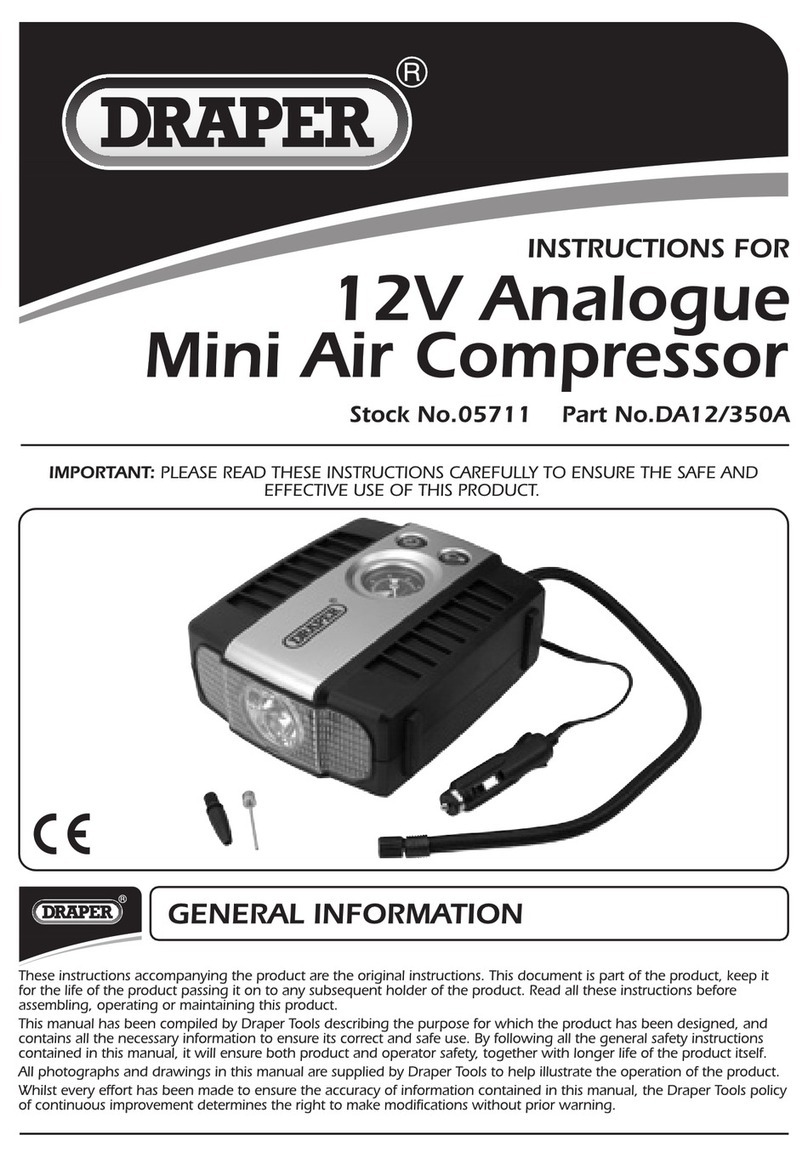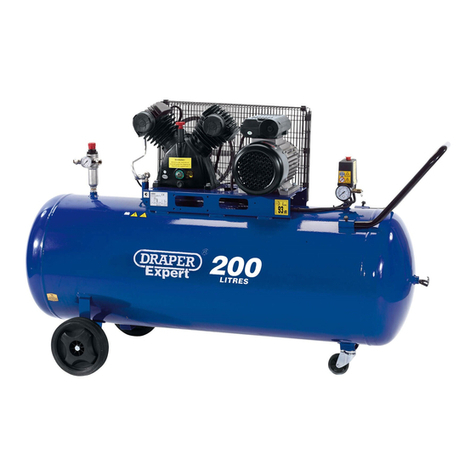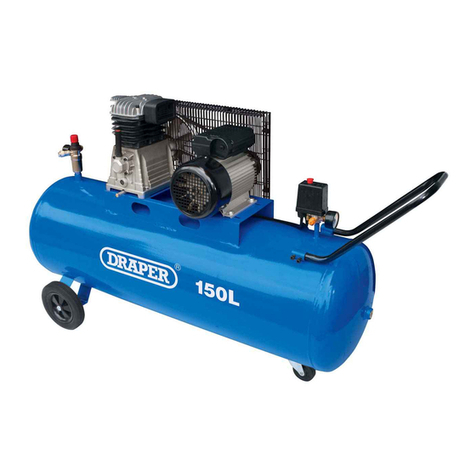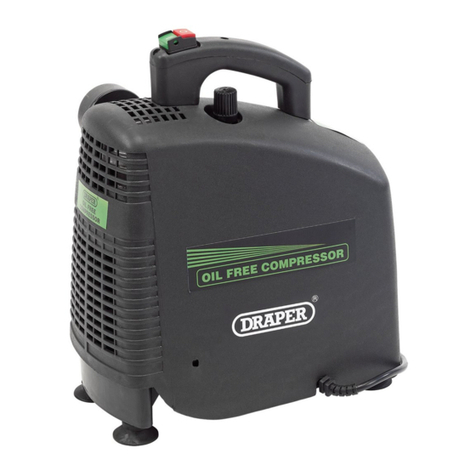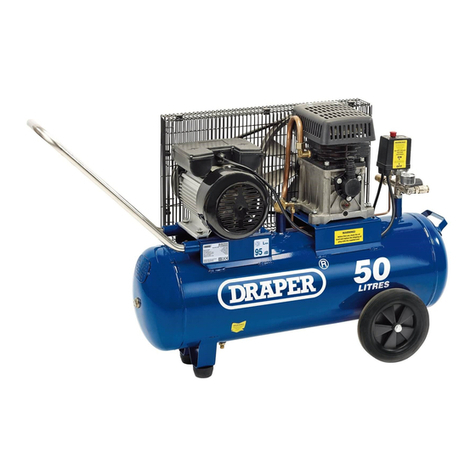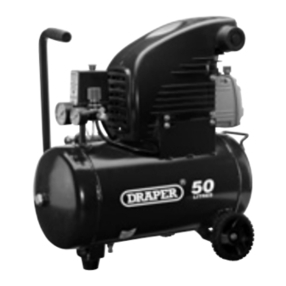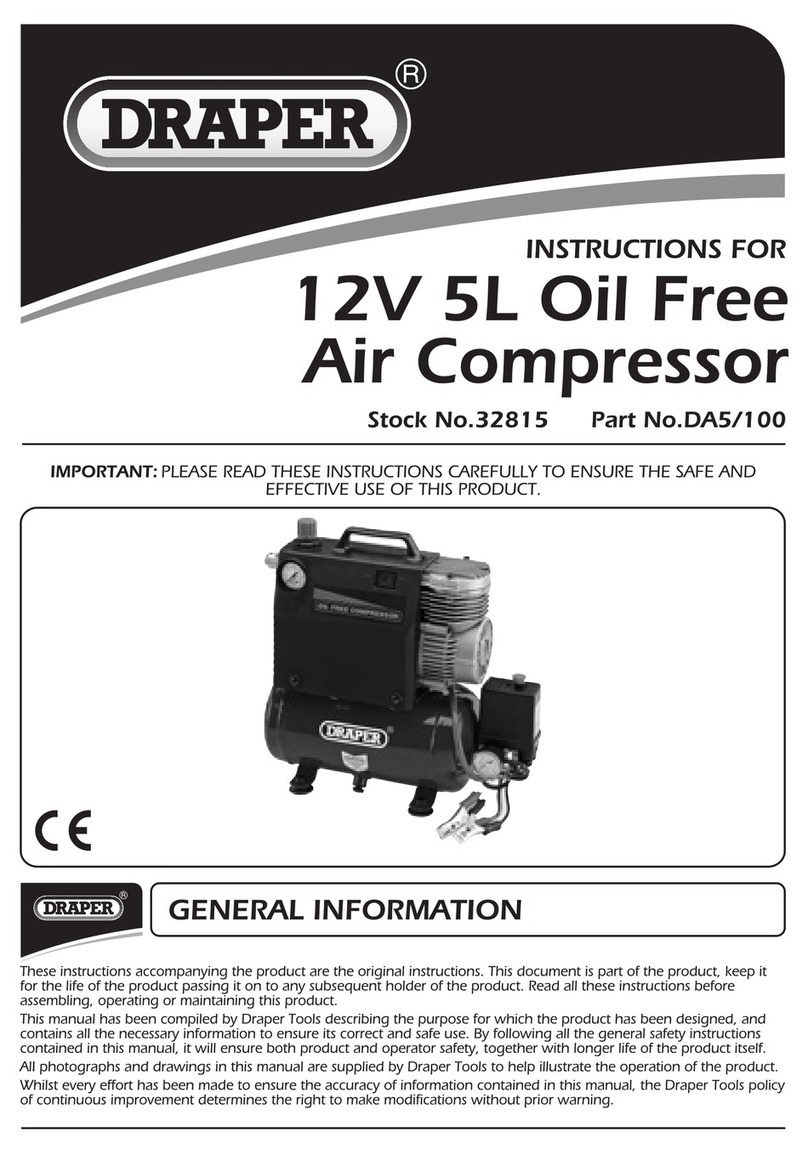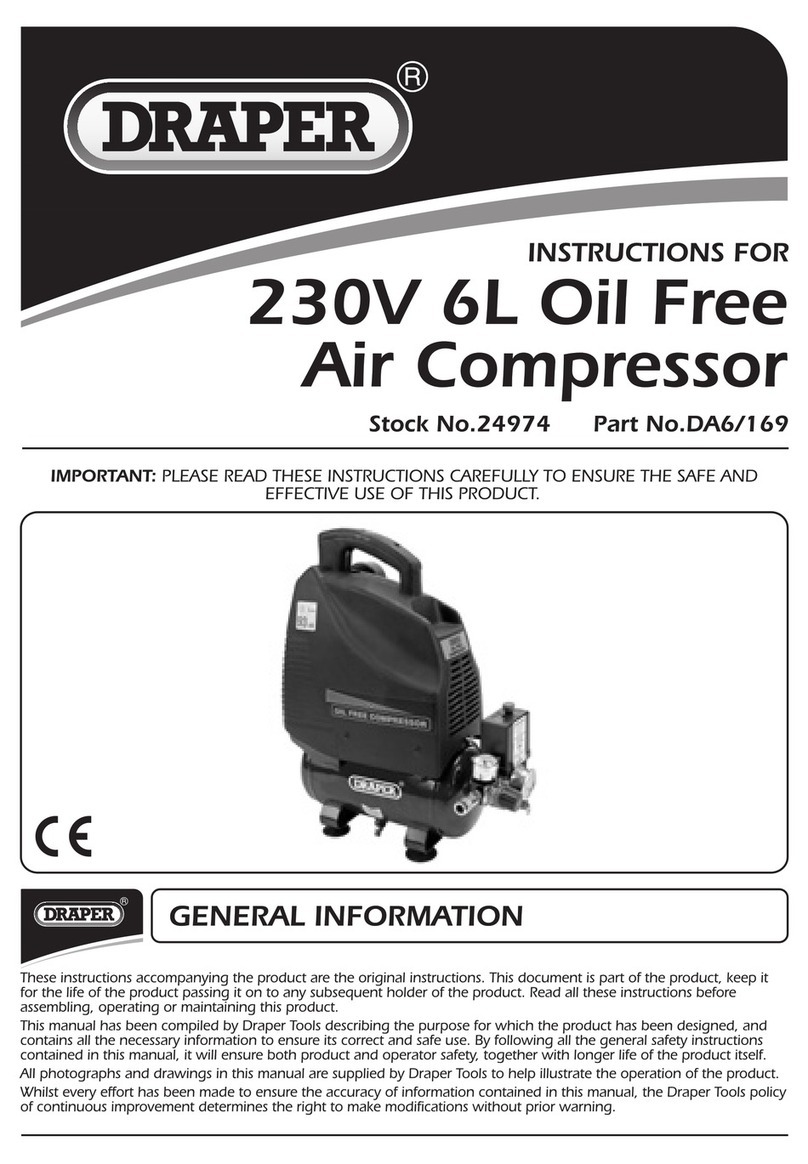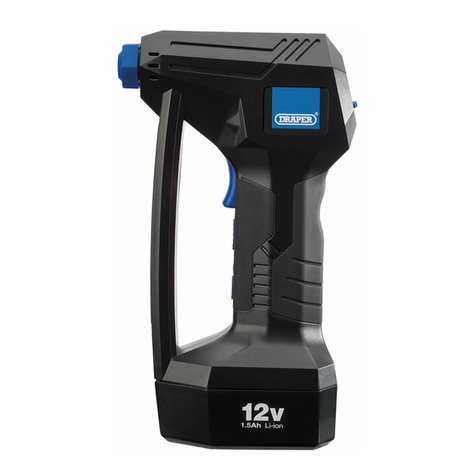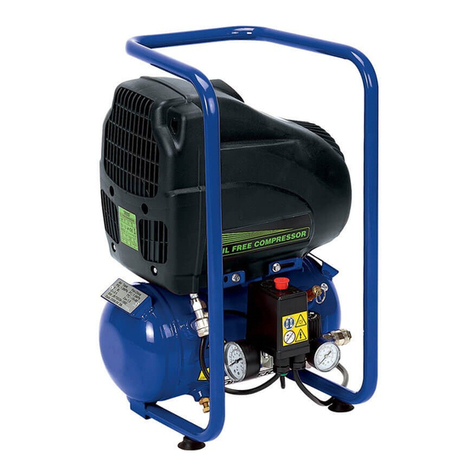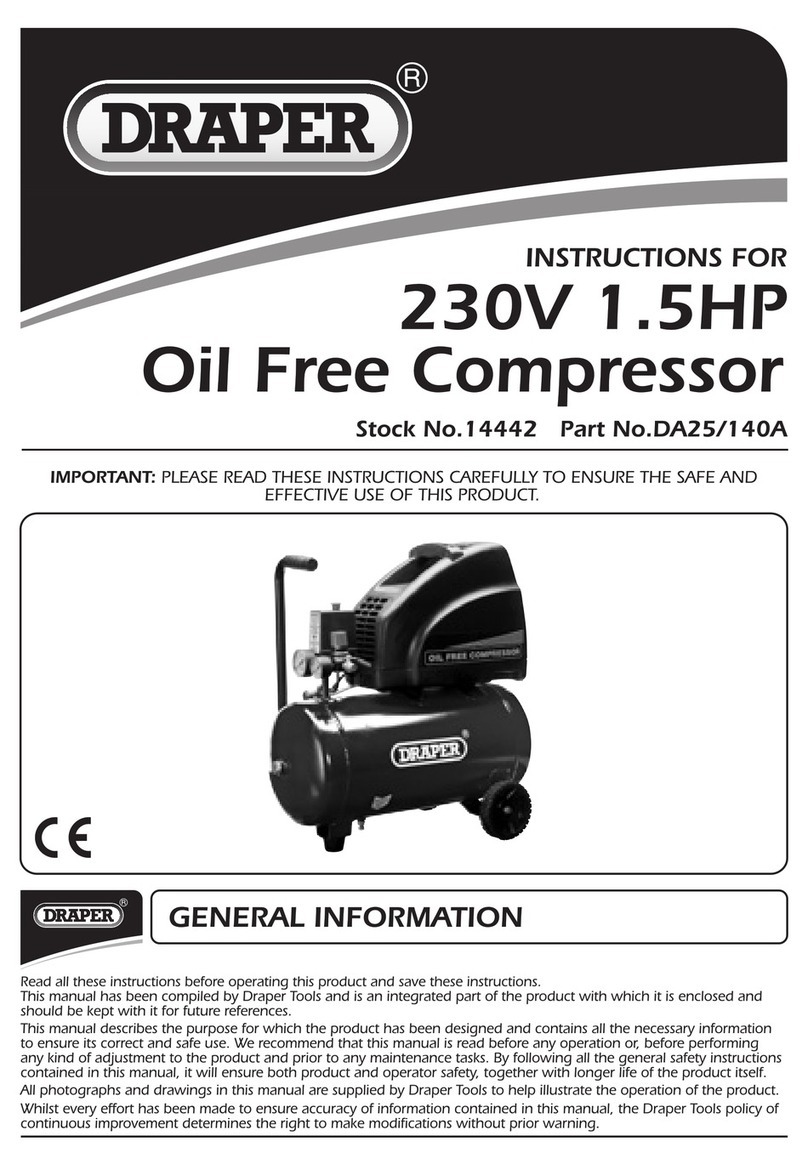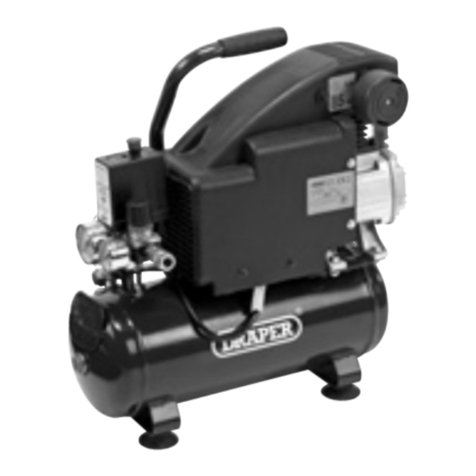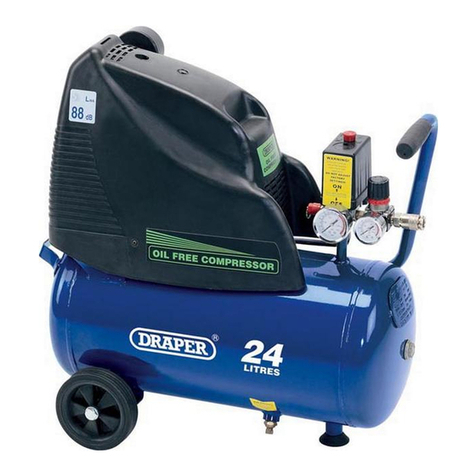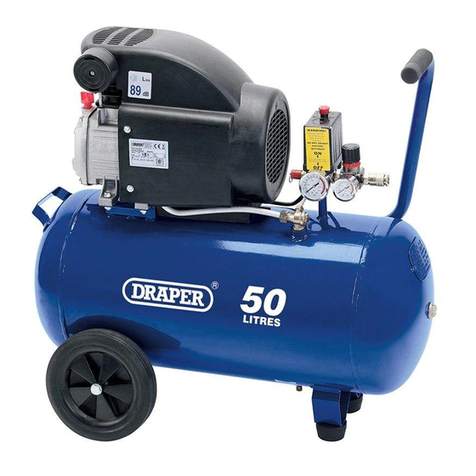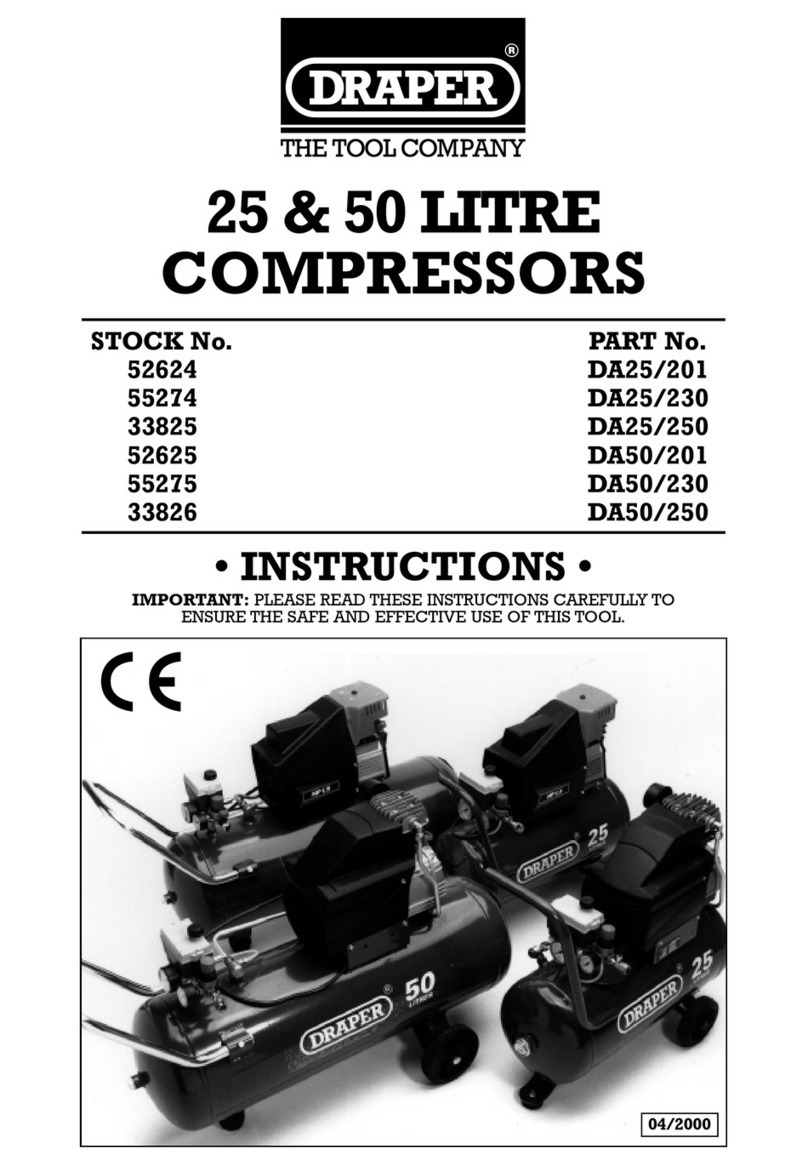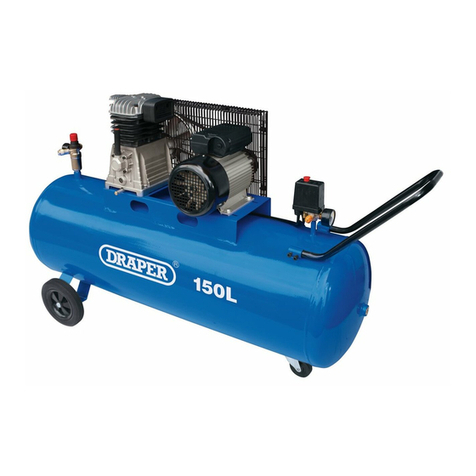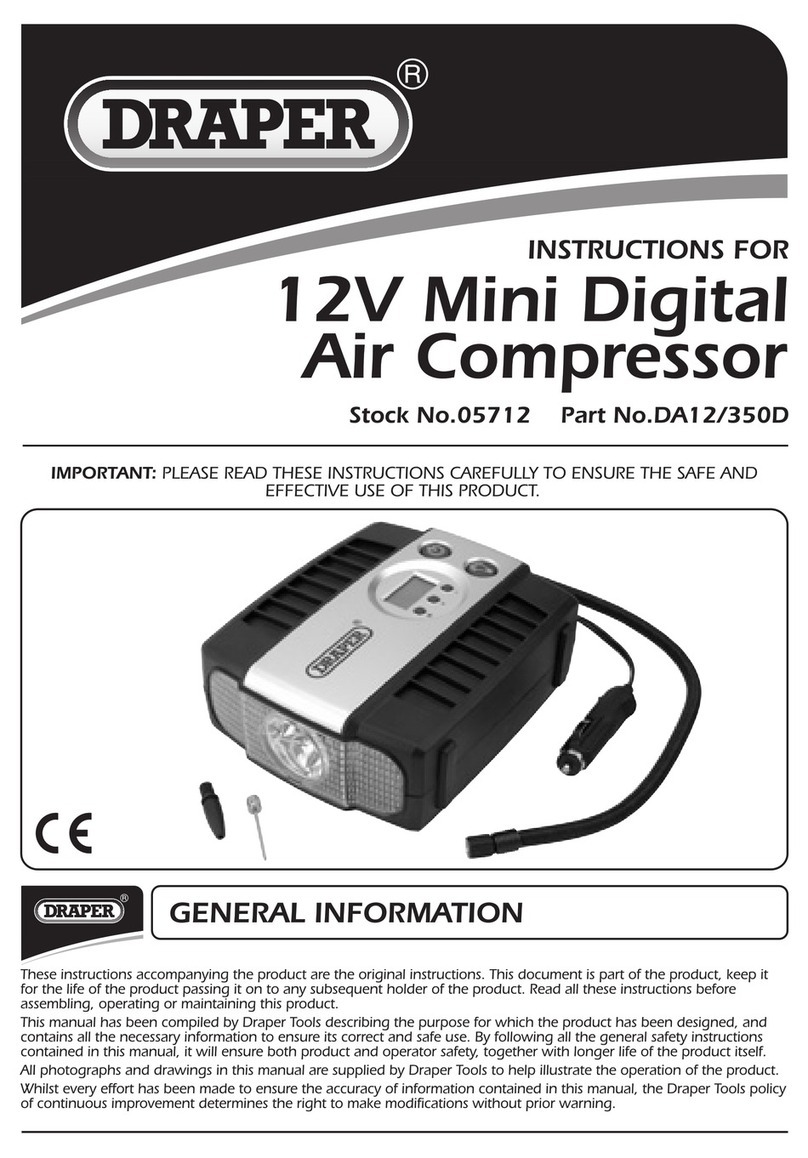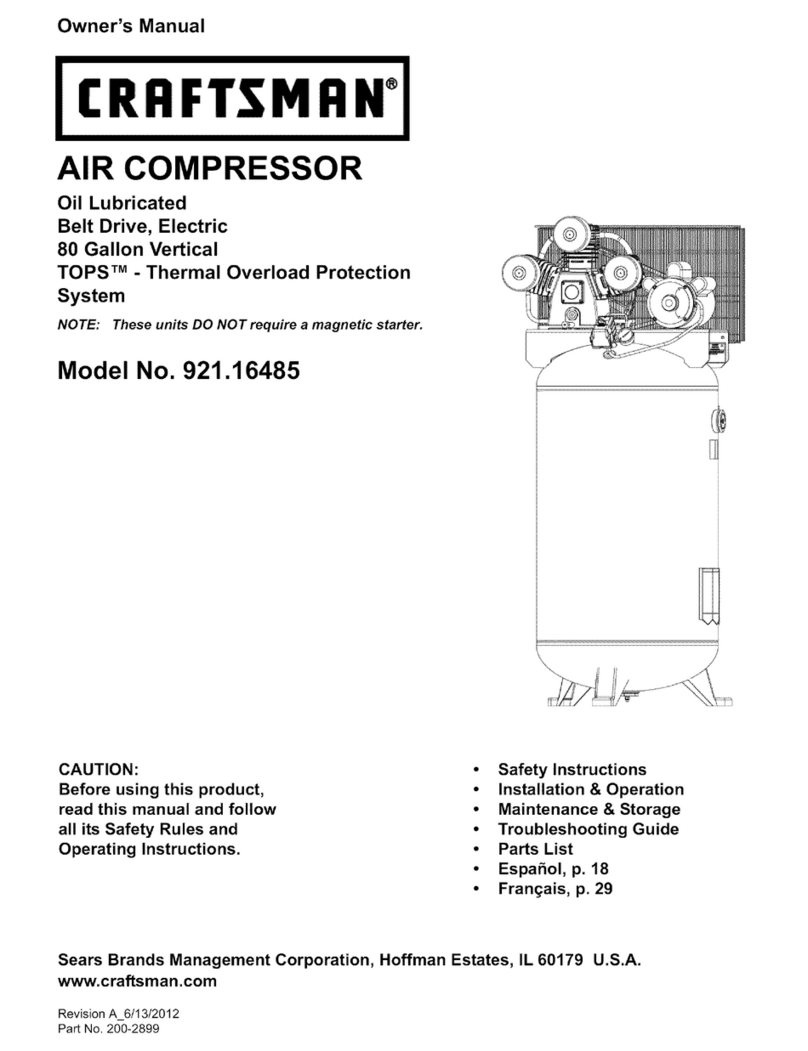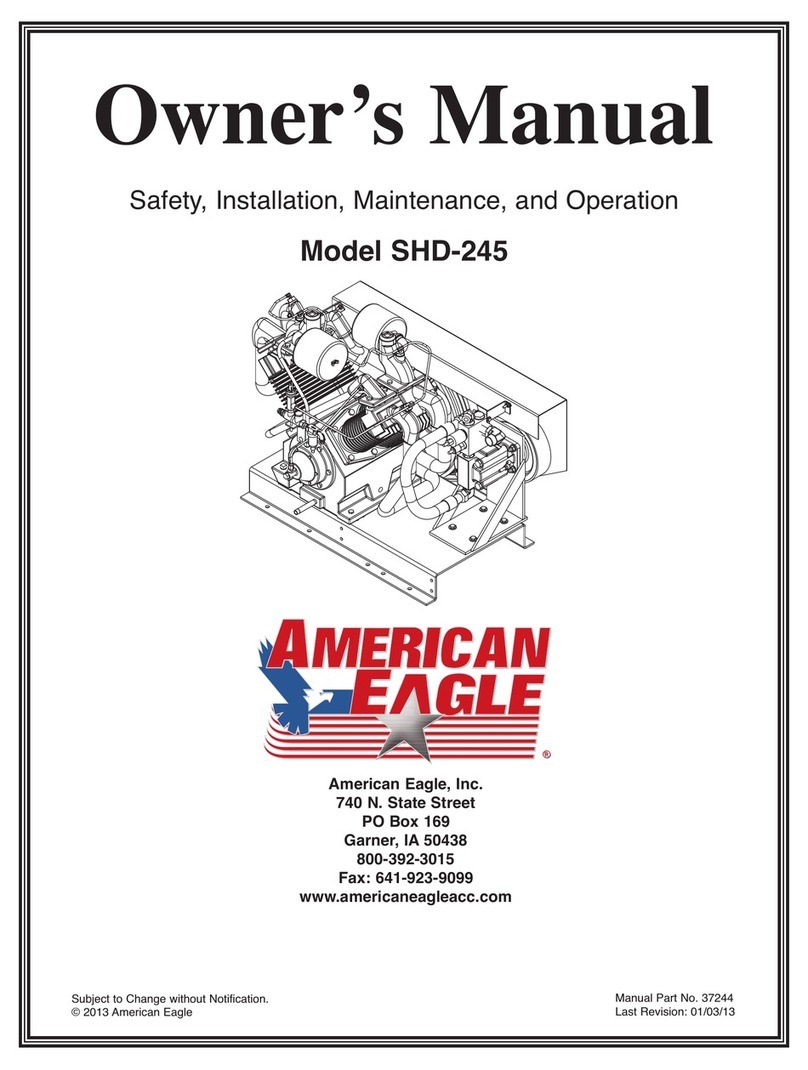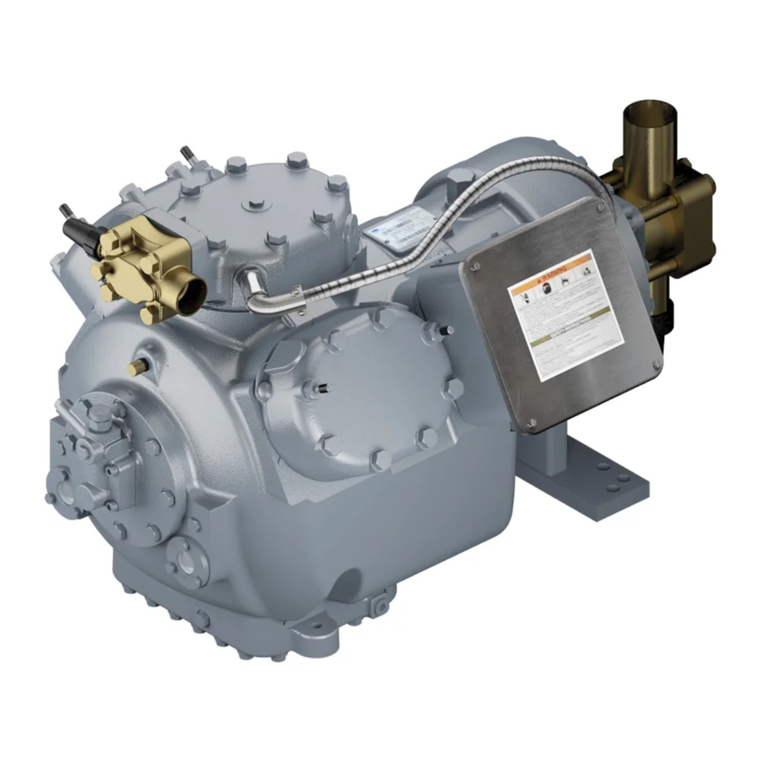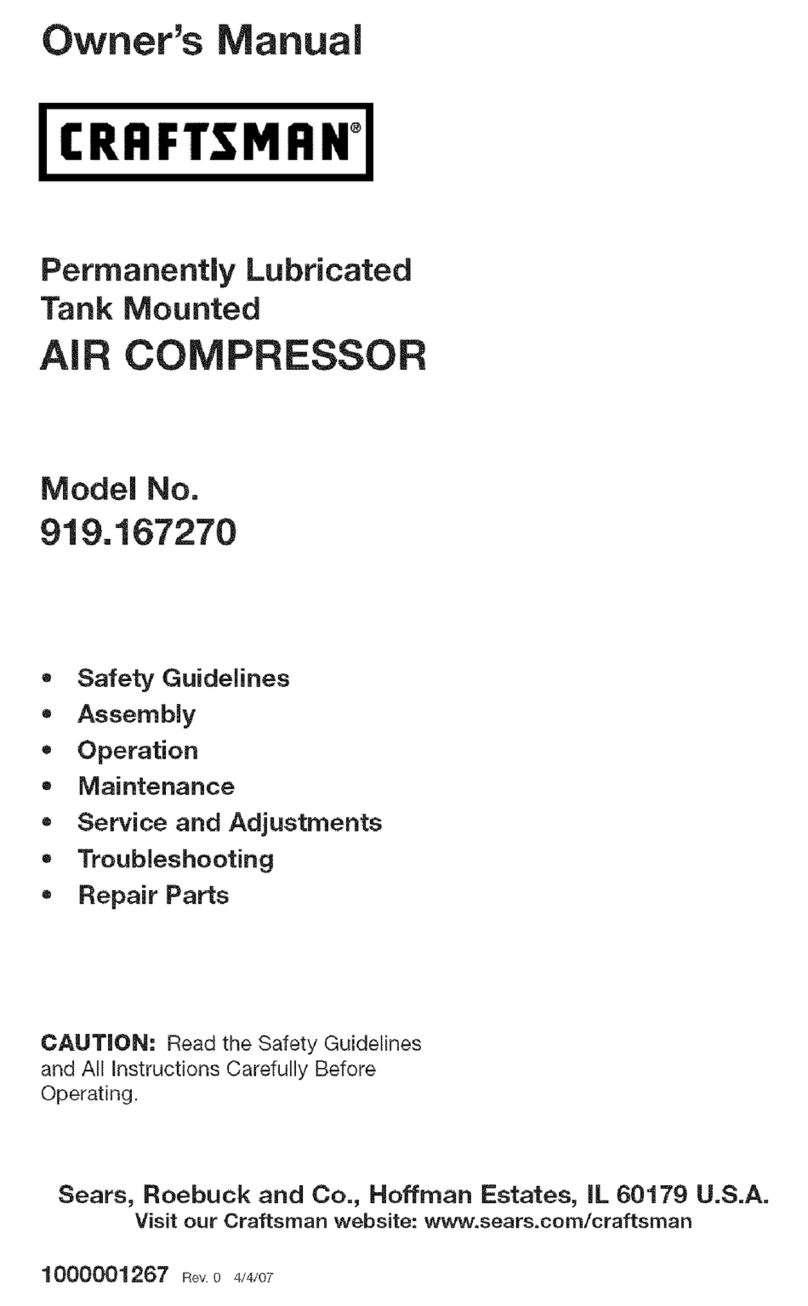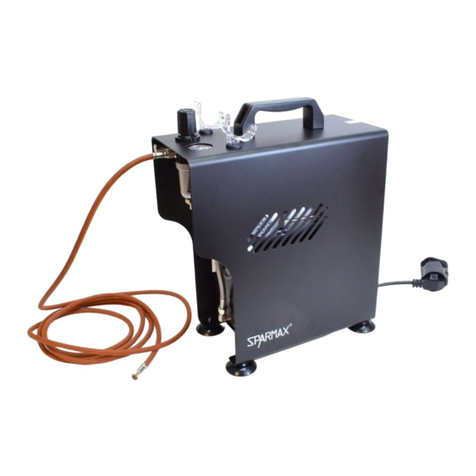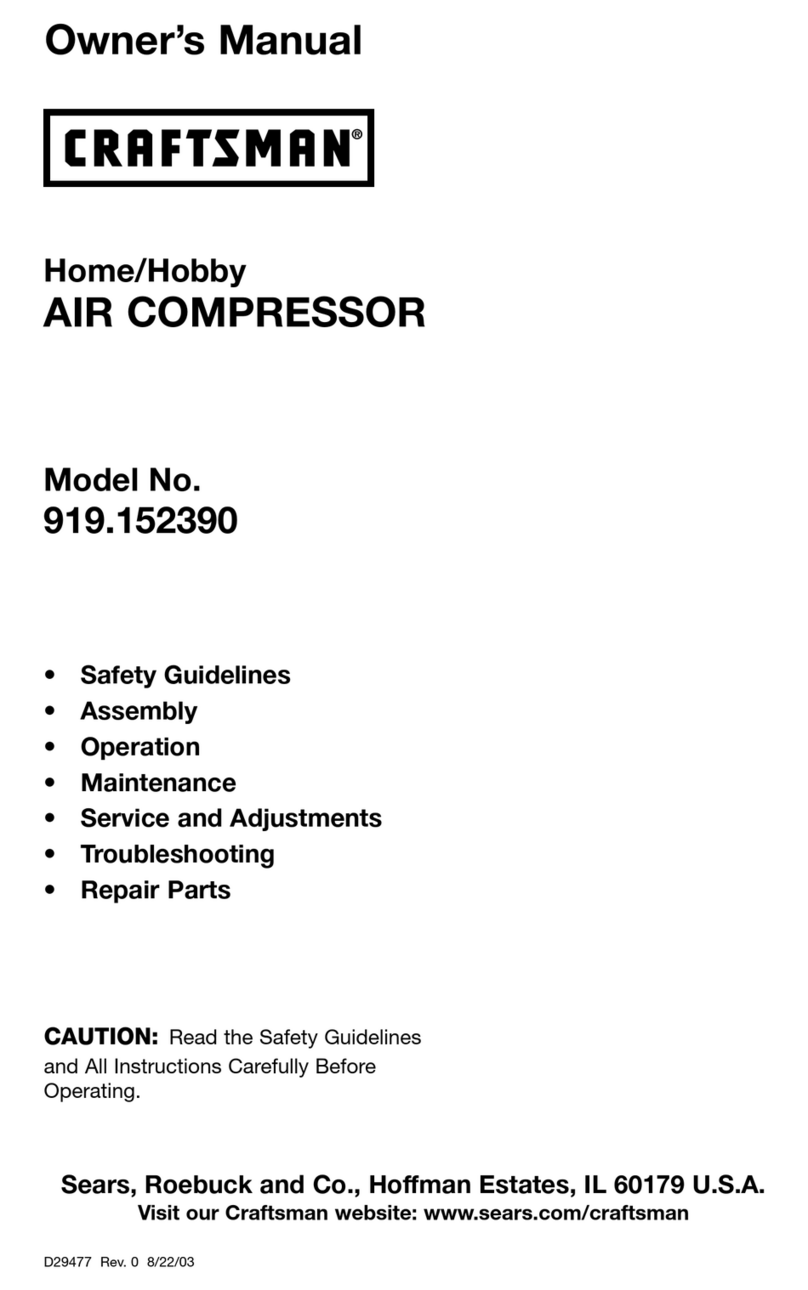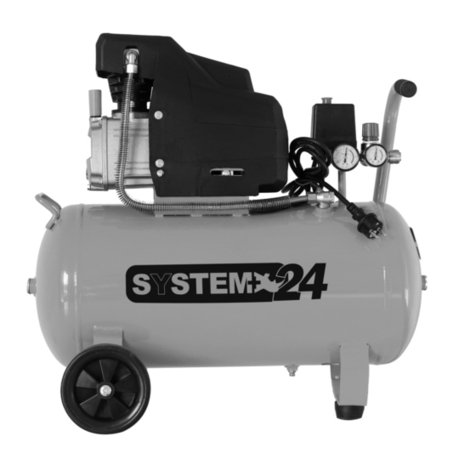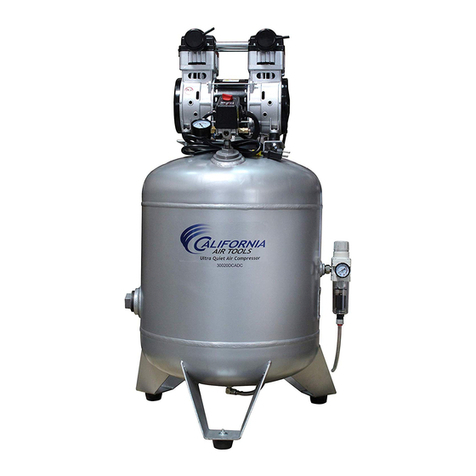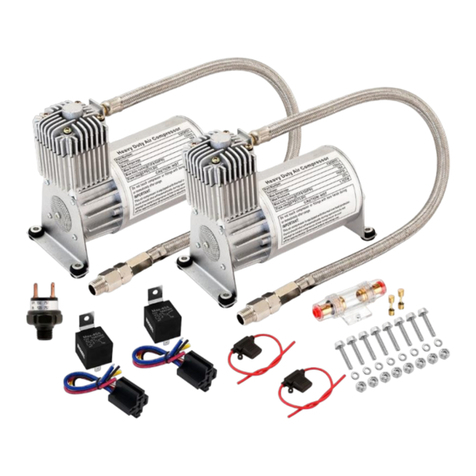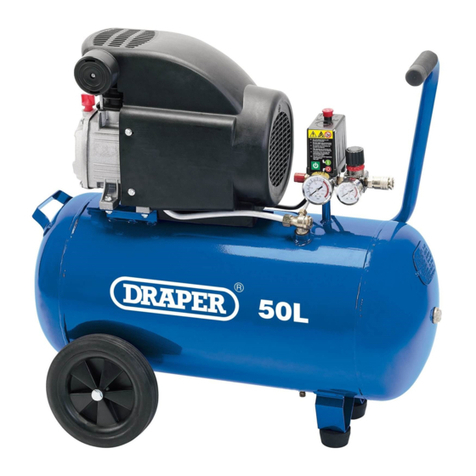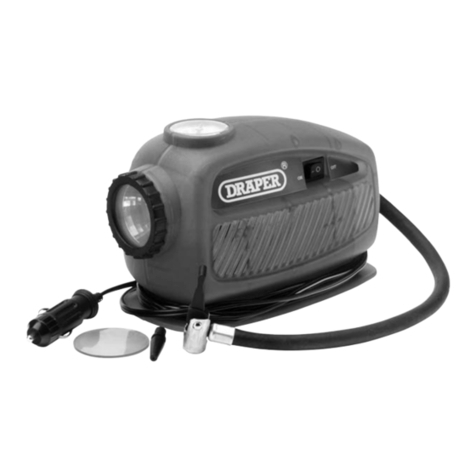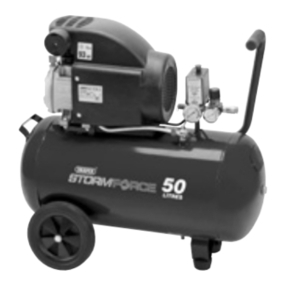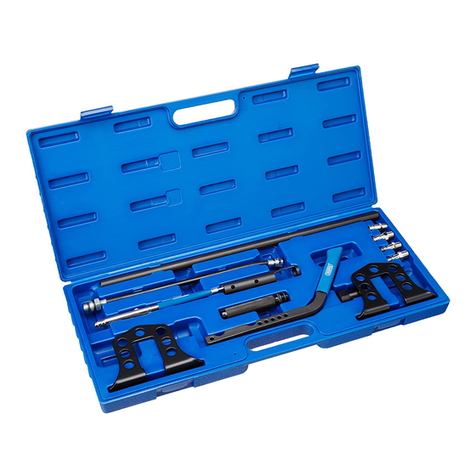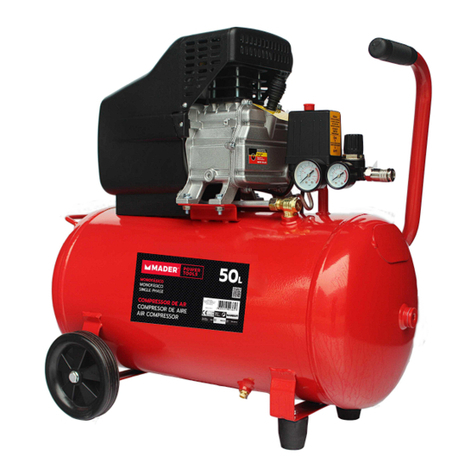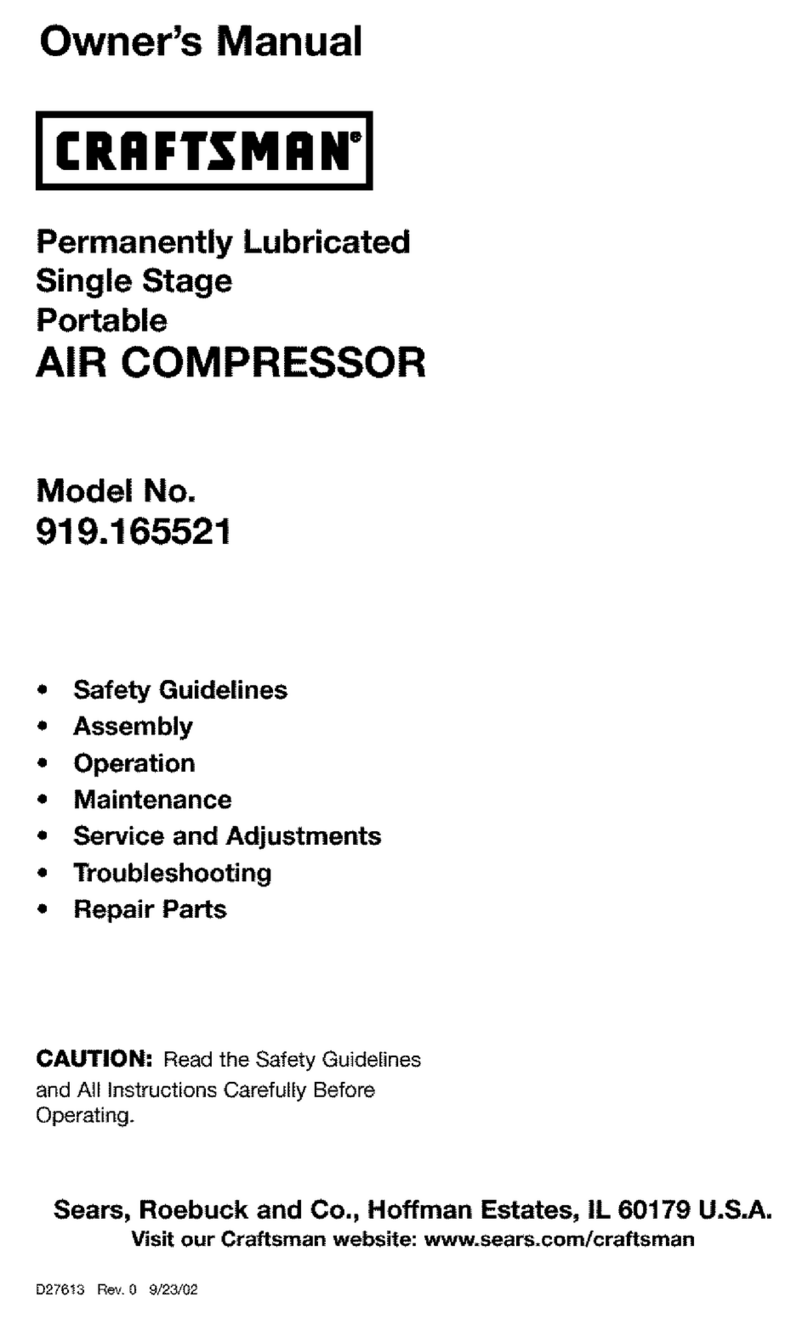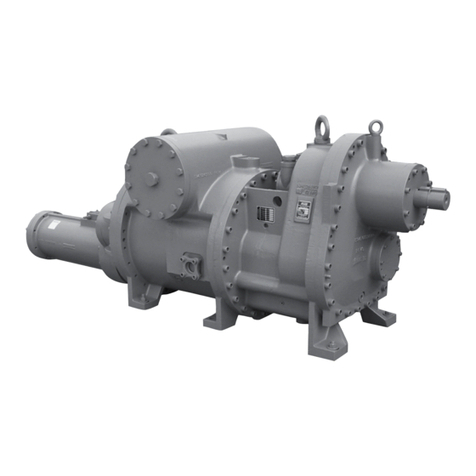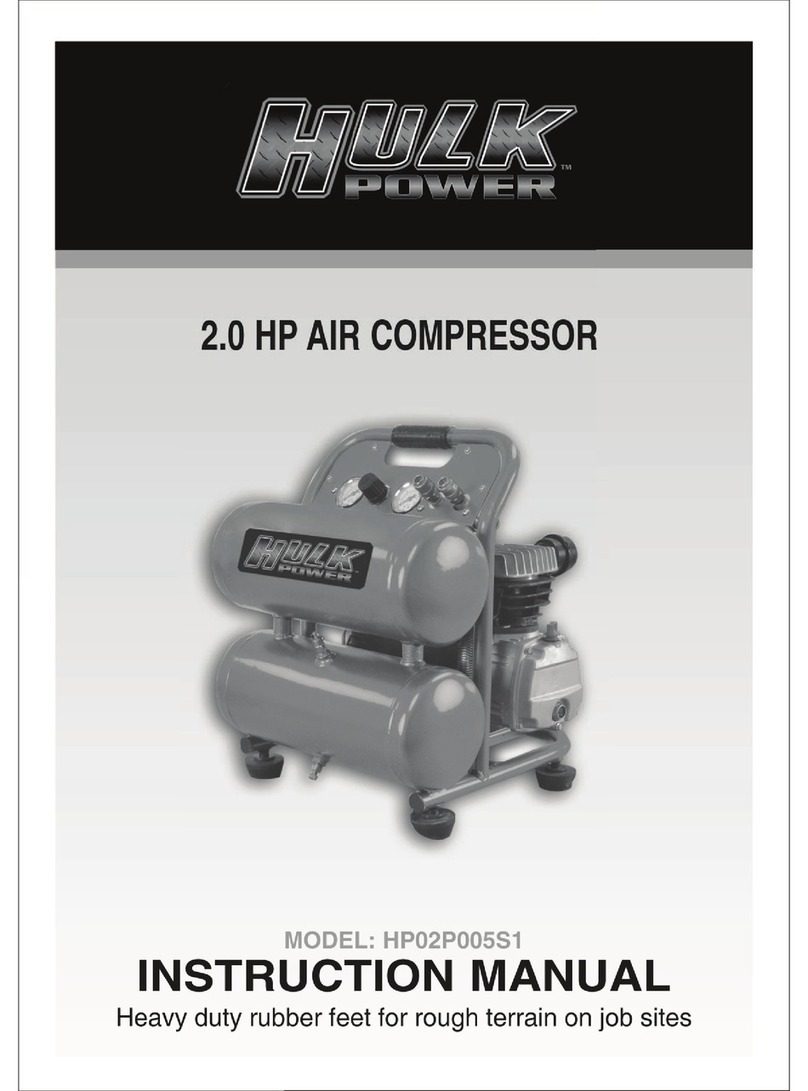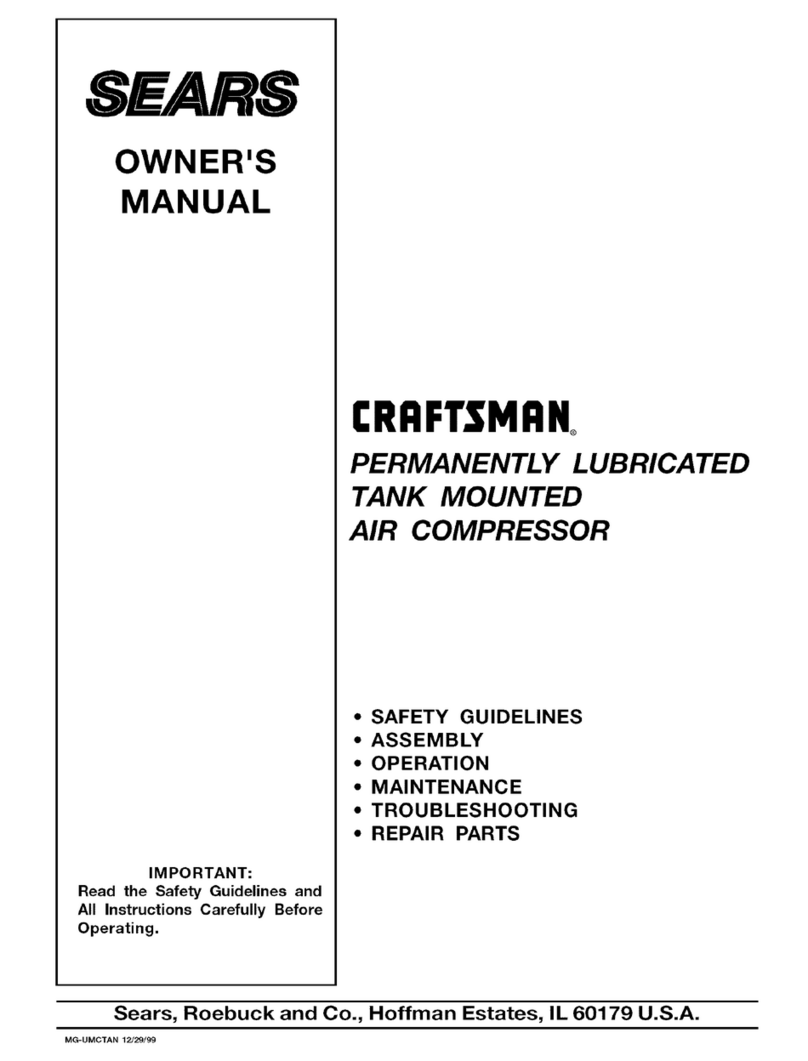
4. Health and Safety Information
4.2 Additional Safety Instructions for This
Air Compressor
Important: ALWAYS check local regulations regarding
pressure vessels before use.
WARNING! The air produced by this product is
NOT suitable for breathing equipment.
Training and Correct Use
• This product is not intended for use by persons
(including children) with reduced physical, sensory or
mental capabilities, or lack of experience and
knowledge.
− Children should be supervised to ensure that they
do not play with the product.
• NEVER sit, stand or ride on this product.
• This product is designed to accommodate a
permanent load from internal pressure; it is NOT
suitable for continuous cyclical use.
• DO NOT leave this product unattended while it is in
use.
− DO NOT use this product with a programmer,
timer, separate remote-control system or any
other device that switches the product on
automatically, or on any circuit that is regularly
switched on and o by the utility, as it may pose a
hazard if it is switched on unattended.
• DO NOT use this product to supply air tools that
require greater air ow than this compressor can
provide.
CAUTION! DO NOT allow the compressor motor
to activate more than ve times in any given
hour as they will overheat the components and
may cause signicant damage to the product.
Environmental Safety and Installation
• Use this product ONLY in well-ventilated
environments where no air pollutants, dust, acids, or
ammable, explosive or toxic vapours are present.
• DO NOT use this product in areas with high ambient
temperatures or in the vicinity of sparks, open ames
or sources of ignition.
• NEVER use this compressor in an elevated location
from which it may fall or tip over.
Working with Compressed Air
• Compressed air can cause severe injury.
− ALWAYS turn o and disconnect the air supply
before making any adjustments to the attached
tools.
− NEVER direct compressed air towards yourself or
others.
− Ensure that compressed air is not blocked by or in
contact with any part of your body.
• Draper Tools recommends the use of a whip hose
between connected tools and the air supply to reduce
vibration.
CAUTION! Whipping hoses can cause severe
injury. Always check for and replace
damaged or loose hoses and ttings.
• Ensure that any connected tool is compatible with the
air supply before use.
• ALWAYS ensure that the air ow is shut o when
connecting or disconnecting an air line or tool.
− Pressurise the compressor tank before connecting
an air line or tool and set the regulator to its
minimum setting.
− DO NOT depress the tool trigger or open the air
line while connecting to the compressor.
• Ensure all connections are securely tightened.
• DO NOT exceed the maximum stated air pressure of
this compressor or any connected tools.
− The pressure of the air supply MUST NOT exceed
more than 10% of the rated pressure of any
connected tool.
Maintenance
• Check and top up the oil level before EVERY use.
• NEVER carry the compressor or any connected tool
by the air line.
• DO NOT use this tool in temperatures that do not fall
within 0–40°C.
• DO NOT use this product if you suspect that the
integrity of the compressor tank has been
compromised.
− NEVER strike or pierce the compressor tank or
expose it to ames sources or sources of heat.
− NEVER weld anything to or drill holes in the
compressor tank.
• Drain the compressor tank of compensation before
and after EVERY use and before storing the product.
– 6 –




















